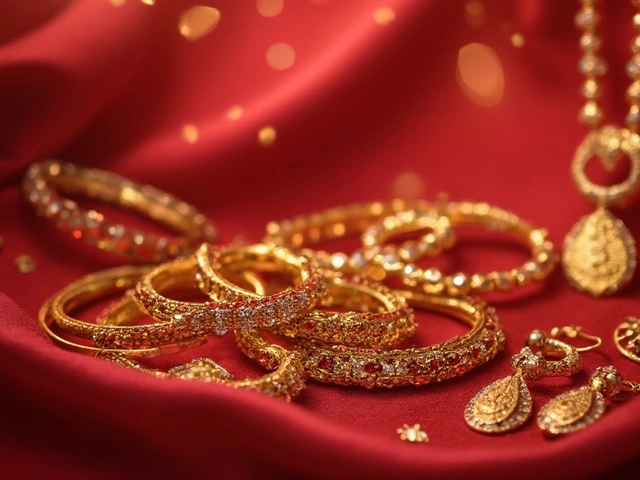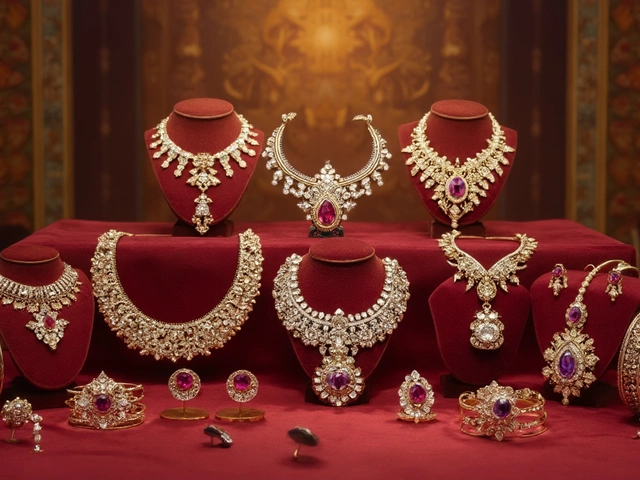Nose Jewelry Meaning: Symbolism, Culture, and Style
You've probably seen a nose ring or stud on a friend, a celebrity, or in a wedding photo and wondered what it really stands for. In India, a nose pin isn’t just a fashion statement; it carries layers of history, belief, and personal expression. Let’s break down the meaning behind this tiny piece of jewelry so you can wear it with confidence and know what story you’re sharing.
Cultural Roots and Religious Significance
From ancient Vedic texts to modern bridal looks, nose jewelry has been a staple in Indian culture. Historically, the left nostril was linked to the female reproductive system, so piercings there were thought to ease childbirth and menstrual pain. That’s why many brides still choose a delicate stud for the left side—it’s both a health belief and a blessing for the new life they’re about to start.
Religion also shapes the meaning. In Hinduism, the goddess Parvati is often depicted with a nose ornament, symbolizing beauty, fertility, and devotion. Wearing a nose pin can be a way to honor that goddess and show reverence. In some Muslim communities, the practice was adopted as a cultural tradition rather than a religious requirement, adding another layer of shared identity.
Beyond faith, nose jewelry signals status and community. In Rajasthan and Gujarat, specific designs—like a gold ‘gajra’ with intricate filigree—identify a wearer’s regional background. In the past, only married women wore certain styles, while unmarried girls might sport simpler studs. Today, those rules are looser, but the cultural echo remains: the piece you pick can still hint at where you come from.
Choosing the Right Nose Pin for You
When you decide to get a nose pin, think about three things: comfort, symbolism, and style. Comfort starts with the material. Gold (especially 22K or 24K) is hypoallergenic and matches most Indian gold jewelry sets, but it’s softer, so a stainless‑steel or surgical‑grade titanium option works well for daily wear if you have sensitive skin.
Next, decide what you want the pin to say. If you’re honoring tradition, a small gold hoop or a “nath”‑style stud with a tiny pendant (often a pearl or a gemstone) fits the classic vibe. For a modern twist, go for a sleek black basalt stone or a tiny diamond cluster—these keep the cultural nod while looking fresh.
Finally, match the pin to your face shape. A round face looks balanced with a vertical barbell or a tiny hoop that adds length. If you have a longer face, a side‑swept stud or a small flower‑shaped piece can create width. Play around with placement: left nostril for traditional meanings, right for a more contemporary, fashion‑first approach.
Whatever you choose, make sure the backing is secure. Screw‑back studs stay put better than push‑backs, especially if you plan to wear the pin for long events like weddings or festivals.
In short, nose jewelry is a tiny accessory with a huge backstory. Whether you’re drawn to the health lore, the goddess connection, or simply love the sparkle, knowing the meaning adds depth to every sparkle. So pick a piece that feels right, and wear it proudly—your nose pin is more than an ornament; it’s a conversation starter that links you to centuries of culture.
Nose Pin Symbolism: What Does It Really Mean?
Nose pins are not just a fashion trend; they're rich in cultural and historical significance. From weddings in India to style statements in the West, nose pins carry unique meanings and symbolism. This article explores the various interpretations of nose pins across different cultures and their evolving designs. Whether it’s a symbol of femininity, marital status, or rebellion, nose pins offer more than meets the eye.





